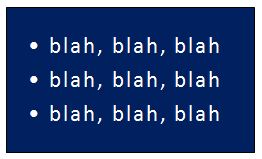It turns out that claims of causing “Death by PowerPoint” may conceal a far more pernicious offense: our unpardonable ignorance of how human attention actually works
In the inevitable battle that you set up between the words that come out of your mouth and those that appear on the screen behind you, it’s usually the audience’s attention that gets caught in the crossfire. Here’s a talk by a leading cognitive psychologist Chris Atherton who’s been looking into what goes wrong in presentations and how to put it right.
Here’s a seminal ‘anti-PowerPoint video’ from the iconic Google head of research, Peter Norvig:
http://www.youtube.com/watch?v=d34cl5JiwD8
The most frequently referred-to critic of PowerPoint is visualisation guru Edward Tufte and here is the video where he pulls no punches.
The debate over how the written word and the spoken word fit together in the process of communication is in fact thousands of years old.
Here’s Socrates talking about writing, in Plato’s Phaedrus, which was written in about 370BC:
…with written words, you might think that they spoke as though they made sense, but if you ask them anything about what they are saying, if you want an explanation, they just go on telling you the same thing, over and over, forever.
Once a thing is put in writing, it rolls about all over the place.
It can fall into the hands of those for whom it means nothing just as easily as it might come to the attention of those who will already understand it.
It has no notion of whom to address or whom to avoid.
And when it is ill-treated or abused as illegitimate, it always needs its father to help it, being quite unable to protect or help itself.
Advocates of alternatives to PowerPoint may be tempted to imagine that, by using innovative visual aid tools such as Prezi, which actually avoid such things as ‘slides’ altogether as presentational elements, they also avoid the issue which Socrates raises, of the written words in some sense becoming ‘orphaned’, ‘out of control’, or susceptible to misinterpretation, a phenomenon which, in the context of slides, is sometimes referred to as ‘The Tyranny of the Bullet-Point‘ (but could just as easily be termed ‘The Liability of the Bullet-Point’).
But even when making a complete departure (from slides, PowerPoint and bullet points) this ‘liberation’ should not lull the presentation designer into a false sense of security.
It’s quite possible to use any other presentation tool, or even to use no visual aids at all and put together a presentation that will generate exactly the same kinds of reaction that Peter Norvig or Edward Tufte reserve for PowerPoint.
Similarly (and perhaps more surprisingly) it is possible to use the very tools that they rail against and put together presentations which they and countless others will watch, enjoy, learn from and recommend to others.
As an example, if perhaps somewhat contrarian: Peter Norvig has in fact used PowerPoint to make that excellent presentation about the shortcomings of PowerPoint.
You can use bullet points to make an audience roar with laughter and get a standing ovation at the end of your talk, just as easily as you can send them to sleep.
There’s nothing wrong with slides, or PowerPoint, providing you don’t use them as a way of ‘leading the presentation’: your talk should be ‘backed up by the visual aids’ and not the other way round.
Doing a ‘slide show with a commentary’ is usually a recipe for disaster in terms of holding the audience’s attention, and that is precisely the kind of thing that the exercise of putting together a PowerPoint slide deck can tempt you into doing.
Why?
Because the effort of putting together slides often seems like such a ‘creative’ activity that it tends to ‘take the lead’ in the presentation production process (and I don’t think alternatives like Prezi are any different in this regard: they offer so much scope for creativity that they may actually exacerbate this problem!).
Because of this tendency for the production of the visual aids to take over the presentation, you need an ‘antidote’ to this, in order to avoid the otherwise inevitable ‘slide’ into potential audience oblivion.
The antidote is ‘presentation production self-disruption’, and here are my tips on how to do it.
How to stop your visual aids taking over your talk:
-
make a video of yourself giving the talk (just use a webcam, nothing elaborate) watch the video, cringe, improve, rinse and repeat
-
early in rehearsals, get someone else to try to present your talk, get others to join you in the audience, then get everyone’s feedback
-
get someone else to (re)write your slides/visual aids/prompts, at least provisionally
-
include in the talk at least one anecdote about some of the problems/dilemmas you had putting together the slides/visual aids
-
put together some ‘alternative slides’ for your key points and then at least occasionally include them in the talk
-
try presenting the second half of the talk as if it was the whole talk, and see if that ‘influences the running order’ of the talk (most ‘dozing off’ tends to happen in the second half of a talk)
-
watch at least three of the most relevant all-time popular TED videos all the way through, ask yourself why they might be better than your talk
-
write out a series of simple test questions, each of which you would expect your talk’s audience members to be able to answer correctly if your key points were effectively communicated, then get someone who has watched a rehearsal to try the test: work on improving results to 100%
-
include at least one piece of audience participation in your talk
-
try to include at least one relevant short entertaining YouTube video clip and at least one relevant and poignant funny picture in the visual aids for your talk


